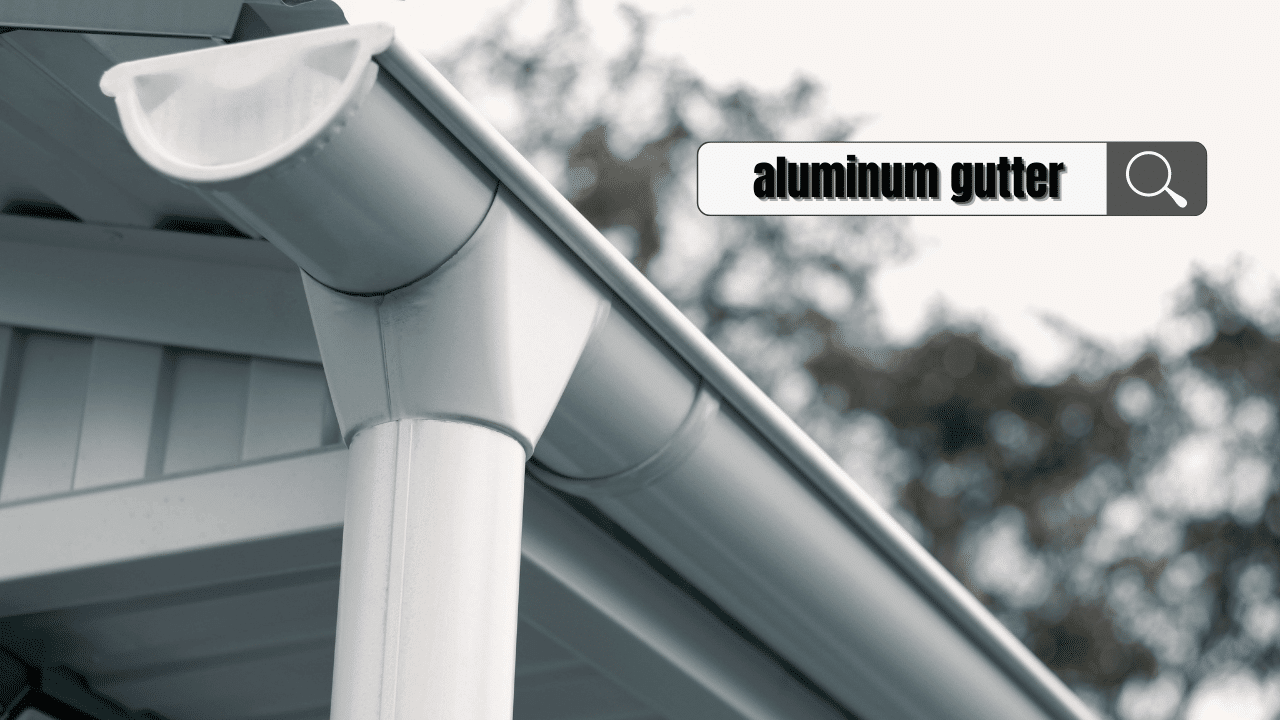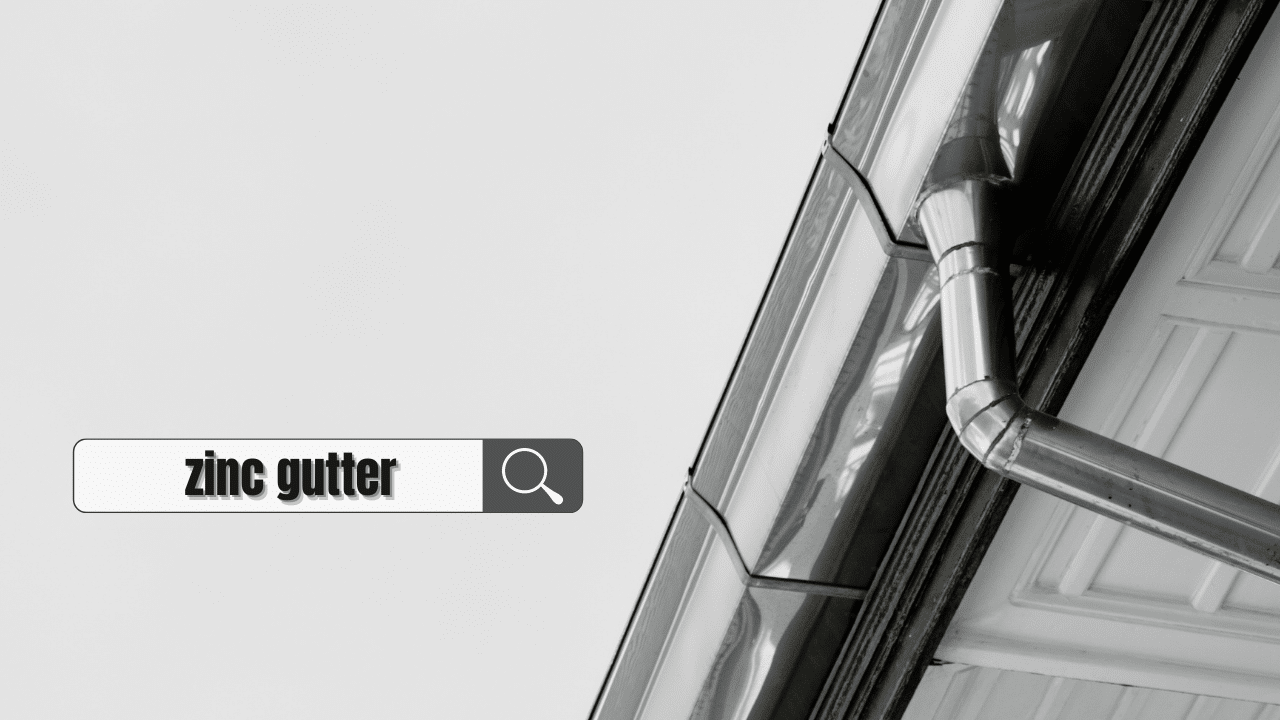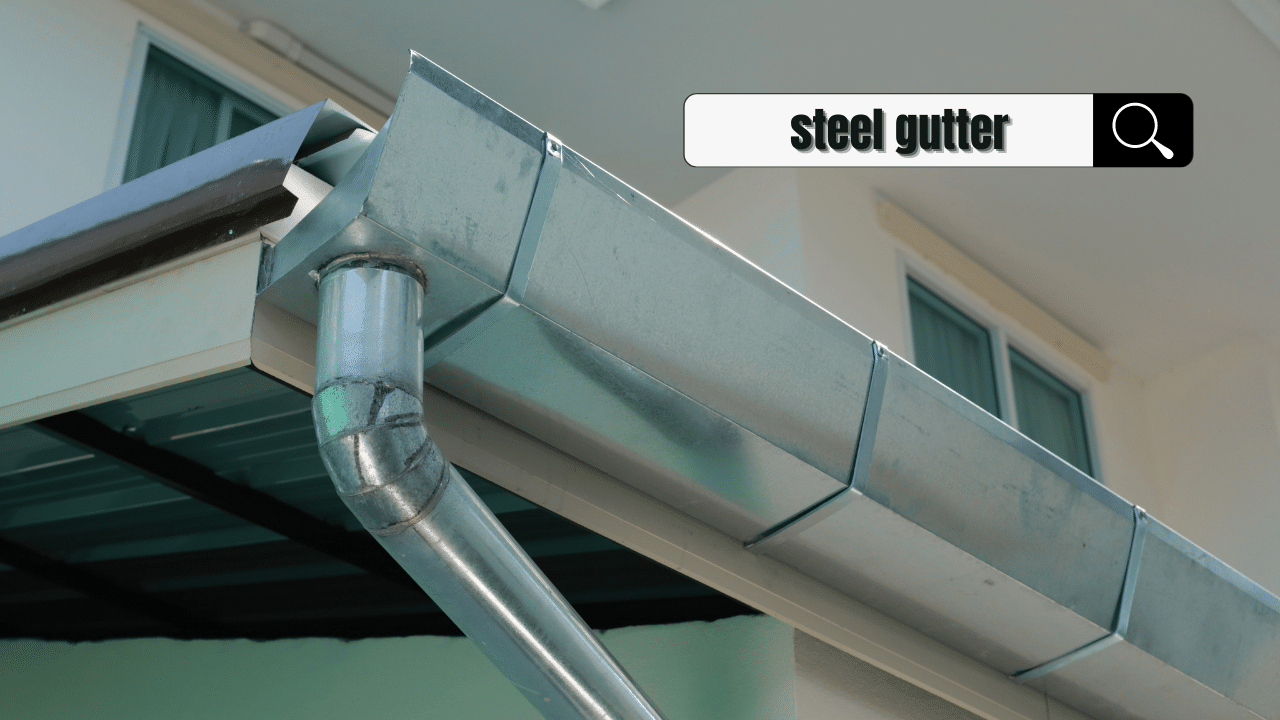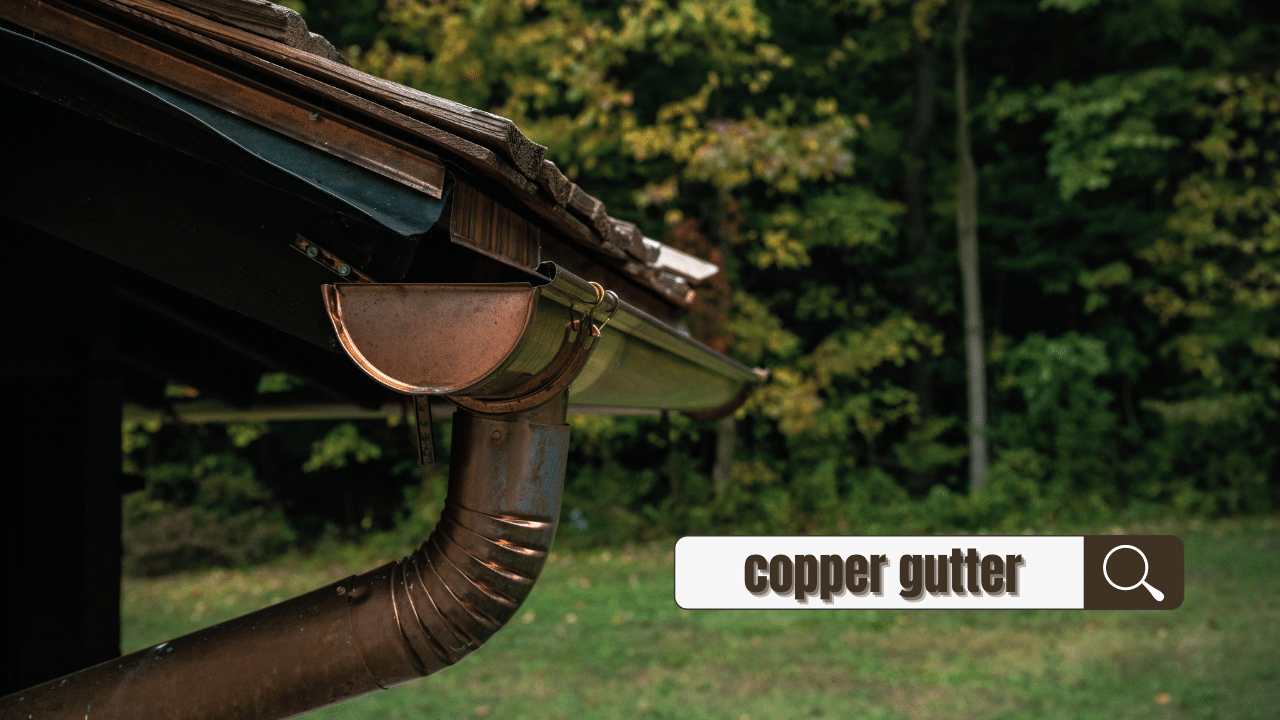Did you know rain gutters do a whole lot more than just protecting people from getting drenched during intense downpours?
Rain gutters, typically situated on the roof's base, keeps water and snowmelt away from damaging the foundation of your house. It also protects your basement from flooding as well as the landscaping from any damage.
If you want to conserve water at home, you may also direct the water run-off from the gutters towards a rain barrel. It can serve as a garden reservoir. In contrast, rain gutters in decline are notorious for house foundation erosion, roof rotting, moldy attics, and basement leaks. Typically, you would want to save yourself from dealing with these consequences.
The Right Time for a Gutter Installation or Replacement
If you believe you need a new rainspout, it's probably the right time to consider replacing those old and rusted gutters. There are several types of gutters to choose from – in various colors, shapes, and budgets. Trust us. There's a rain gutter that will match your home's aesthetic and budget. Regardless, gutter installation costs can be expensive.
How do you make the most bang out of your buck? The selection process can be overwhelming, but always prioritize a material's durability and cost-effectiveness to make the best choice.
At this point, you might be wondering about "how much does rain gutter installation cost?" or "what is the average cost of rain gutter replacement?" – read on as we have all the answers to your questions and more.
Let's discuss six of the most common types of gutters, popular materials and styles, and other expenses to expect in a typical gutter installation project.
Gutter Installation Cost Overview
Gutter installation costs run between $678 and $1,789 for a standard 200 feet length. The expenses can start as low as $8 per linear foot and reach a peak of $5,750 to cover the entire project.
For an average-sized home of under 2,400 square feet, professional installation may cost about $3,450. This estimate is based on 150 linear feet for a typical single-story home.
The most common gutter system type is aluminum gutters, which also cost around $3,450 per home.
To determine the best service at your set budget, get multiple quotes from at least three local gutter professionals to determine the average price of your new gutters.
Different Gutter Styles and Shapes
Before we talk about the six different types of gutters based on the material used, it's important to discuss other variations based on their shape and style. Most rain gutters are available in five shapes: half-round gutters, K-style rain gutters, custom-built fascia, European gutters, and Victorian old gothic.
K-style gutters prove to be the most popular gutter style, featuring a cross-section that resembles the letter K to allow them to hold more water. Rarer gutter styles, such as fascia and victorian ogee, will hike up the costs significantly. Let's discuss the three gutter styles in detail below.
1. Half-round Rain Gutters
These gutters are exactly what the name implies: shaped like half-round tubes, like a tube that's cut in half. Although not a decorative addition, its selling point is how it can efficiently carry water.
Regardless, the exposed, trough-like shape puts them at a higher risk of debris and fallen leaves clogging. It's why a lot of homeowners with this particular gutter style also install leaf guards at home. Their curved sides also require brackets to hold them in place.
Generally, these gutters are found in older, traditional homes built before 1960. If you're planning to move into a historic home, expect local ordinances requiring this rain gutter type.
2. K-style Rain Gutters
This gutter type resembles the letter K when viewed sideways, which is why it got the namesake. K-style gutters are the most common gutter style for most homes built in the past 50 years. It has a flat back, enabling you to nail it to the fascia board without using brackets directly.
One appealing point of K-style gutters is their decorative front side (curve or ogee) that mimics crown molding. With various available styles, homeowners who prioritize the aesthetic of their house may opt for this gutter.
They also carry more water than half-round gutters, as they have straight, outward angled sides. Therefore, it's best to consider this gutter if your property is located in a rainy environment.
However, K-style rain gutters may be more challenging to clean than other types as the inner angles typically collect rotten debris.
3. Custom-built Fascia Gutters
Modern gutters fit for the contemporary homeowner. Customized fascia gutters offer a sleek, stylish look that suits every modern house. Contrary to half-round and K-style gutters, fascia gutters aren't sold in sections assembled– as these may only potentially leave seams prone to leaking and rusting.
Instead, custom-built fascia gutters are from a long aluminum sheet. Expect this gutter type to cost you more than the other options (up to twice as much depending on the size of your home), requiring professional installation as well.
4. European Gutters
European rain gutters are a subtype of half-round gutters– with a distinct, visible bead from the outside view. These gutters are commonly attached to properties with a half-round hanger.
Several homeowners choose European gutters because of their visual appeal. So if you want to add a classy touch to your home, European copper gutters prove to be a great choice. Just envision their distinctive patina, the gorgeous and timeless appeal it'll add to your property. This gutter shape is renowned for its durability. It is usually made from solid materials, so you can count on it to hold up during severe weather conditions.
If you live in an area with frequent abrupt swings in temperature and thunderstorms, there is no need to worry about your sturdy European gutters being damaged or ripped off.
5. Victorian Old Gothic
Old gothic rain gutters are another decorative, visually appealing choice. These gutters have a unique profile that will make great additions to high-end Victorian period homes. Their style is influenced by cast-iron gutters (popular back in the 19th century). The result features traditional, stylish gutters.
Although this gutter shape complements traditional properties perfectly, it may also suit modern homes given proper styling. These gutters are notably shallow, so they cannot efficiently handle water flow compared to other styles and shapes. Regardless, they prove beneficial in tiny homes.
6 Popular Rain Gutter Types based on Material
Different types of gutter are categorized by shape or style, size, or material used. This article will refer to the six different rain gutter types based on their material to make things less complicated.
In the past, wood was considered as the rain gutter material of choice. You can observe this trend in old, historic neighborhoods. However, since wood is naturally prone to rotting and weathering, other durable alternatives started to gain more popularity.
Today, rain gutters are commonly made from materials like aluminum, vinyl, steel, or copper. While you can opt for half-round and K-style gutters from all of these materials, you are only limited to aluminum fascia gutters.
For your reference, let's compare the six different gutter materials and their unique benefits:
Gutter Material | Price | Advantages |
|---|---|---|
Aluminum | $7 - $13 per linear foot | Easy to install, resistant to rust, available in various colors |
Vinyl | $3 - $7 per linear foot | Lightweight, cost-effective, and resistant to rust and corrosion |
Zinc | $11 - $25 per linear foot | Long-lasting, resistant to rusting, warping, or fading, shows an attractive patina in the long run |
Steel | $9 - $23 per linear foot | Strong, can stand severe weather conditions, can be painted over to your liking |
Copper | $17 - $34 per linear foot | Features a beautiful, green patina, durable, resistant to rusting or warping |
Galvalume | $23 - $34 per linear foot | Highly durable and visually-appealing |
1. Aluminum Gutters
Considered the most popular rain gutter material, seamed or seamless aluminum gutters are a crowd-favorite. They usually come in three thicknesses: .025 inch, .027 inch, and .032 inch.

Keep in mind that the price varies on the aluminum thickness and the gutter style, costing $7 to $13 per linear foot. The thinnest size is the most cost-effective option, but it is prone to dents and bends. If you live in an area with severe storms and heavy snow, it's best to invest in thicker aluminum material.
What makes aluminum gutters so popular? Well, this material is rust-resistant, lightweight, and easy to install. This gutter material also lasts for around 20 years of good use. However, it is more prone to cracks and bents than other gutter materials.
2. Vinyl Gutters
If you're working with a tighter budget, vinyl material is a cost-effective choice to consider. Similar to aluminum, vinyl is also lightweight and easy to cut. Professional installation will cost you up to $3 to $7 per linear foot.

This material is available in different colors, and you can paint it over to your liking. Although it is not known for its durability, you can enjoy up to 20 years of usage with vinyl gutters– that is, if you live in an environment without extreme temperatures or heavy rain and snowfall.
However, its color may fade over time, given frequent exposure to sunlight. The material may also turn brittle when exposed in high-heat climates or crack in freezing temperatures.
3. Zinc Gutters
Gutters made of zinc will cost you more than other materials, but you can count on its durability – as it is known for its corrosion, warping, and weathering resistance. Since this material is on the higher end of the scale, expect to shell out between $11 and $25 per linear foot for zinc gutters.
You may expect up to 50 years of use with zinc gutters. This life expectancy will decrease accordingly if your property is situated near the sea or ocean, basically any location with salty air.

The material initially appears to have a dull gray hue, but they develop a beautiful gloss or sheen (patina) after a certain period. It effectively conceals any visible scratches and scrapes.
Zinc rain gutters will need professional installation, given all the ends and joints must be welded in place. However, it is common to see these gutters in high-end properties.
4. Steel Gutters
For properties situated in areas with severe climates, steel gutters are more suitable than aluminum ones. It costs around $9 to $23 per linear foot on average.

The majority of steel gutters are galvanized, which will increase their natural resistance to rust. However, oxidation is inevitable after 10 to 15 years. Since this material won't rust, it will cost you more than other gutter materials. Unfortunately, steel is also heavy and difficult to work with. Not to mention, it requires soldering. You will need to hire a professional to install your new gutters in place.
Leaf guards are known to prolong the life expectancy of just about any rain gutter type, especially with steel gutters. On the other hand, massive fallen leaves will only encourage rust onset.
5. Copper Gutters
Gutters made of copper have a distinct beauty, making them a perfect choice for aesthetic homes. However, on average, it will cost you around $17 to $34 per linear foot.

Remember that its initial shine will fade into a green-colored patina or a thin film, especially without frequent polishing. Weather-worn copper, in particular, gives off a classy and timeless appearance. It's also known to be observed commonly on high-end properties.
Copper material is known for its extreme durability. From the most extreme heat to the coldest weather condition, it remains unfazed. With that in mind, along with its undeniable visual appeal, copper is considered the most expensive rain gutter material available.
You will also need to hire a professional to install it in place. With proper installation and welding, you can count on your copper gutters to last for 50 years and up to 100 years. (Related article: Copper Gutters: How Much Do They Cost?)
6. Galvalume Gutters
Galvalume rain gutters are made of steel with aluminum and zinc coating, the result after several homeowners requested other visually appealing gutter options. It costs between $23 and $34 per linear foot.
Its steel base provides strength that exceeds the renowned durability of aluminum gutters. What's not to love, right? Additionally, the grayish aluminum-zinc coating serves as a protective barrier against rust. It makes galvalume gutters the perfect choice for many contemporary, modern houses.
Undoubtedly, your choice of material will greatly determine how much you will pay for rain gutter installation. Most gutter prices are measured in linear feet, with the average house requiring 150 to 200 gutter linear feet.
Prepare your budget accordingly for extra accessories and additional expenses.
Downspouts Extensions
In discussing rain gutters, it is only natural to mention downspouts extensions as well. These are available in round or square shapes, with a width of 3 to 6 inches. For homeowners who prioritize aesthetics, there are also decorative varieties available such as spiral shapes. Remember that the number and size of downspouts that fit your needs will depend on your system's capacity.
Here's a good rule of thumb to remember: one downspout covers around 30 to 40 linear feet of gutter. If you want to increase your gutter system capacity, it's best to add more downspouts accordingly.
Sectional vs. Seamless Gutters
Gutters are classified as either sectional or seamless. Seamless gutters are generally made of metal. Professional companies fabricate these. Thus you need to hire a pro for its installation. In contrast, sectional gutters are composed of metal or vinyl material.
Traditional gutters are sectional. Most homeowners buy these in pre-cut forms, around five to fifteen feet. Then, your contractor will link the trenches on the roof edge. However, this style poses a specific problem. The attachment within pieces may be weak, making them prone to leaking or corrosion.
An alternative option is a seamless gutter system, where a professional uses machinery to fold metal sheets and turn them into a seamless gutter. Most seamless gutters will cost you more than sectional gutters. However, keep in mind that these gutters require professional installation, at around $3 to $23 per linear foot.
Gutter Type Based on Color
Most homeowners can either choose to go with either neutral colors or bold colors for their new gutters.
Basic Composition of a Rain Gutter
Like any other industry, rain gutters also have their system composition. Let's get to know the essential parts of gutters:
Labor Costs
A critical consideration in setting your gutter installation budget is the total labor costs. A DIY installation is feasible if you're using lightweight material such as aluminum. However– several homeowners still opt to hire a professional to carry out the job smoothly. Keep in mind that the total labor costs vary depending on your preferred material and the location of your property.
Here are some additional variables to keep in mind that may affect the total gutter installation expenses.
Fortunately, most gutter contractors offer estimates free of charge if you're checking their services. It's best to get at least three quotes from local gutter service providers to help you find the most efficient service and cost that works for your budget.
While the gutter installation process isn't a complicated home improvement project, you wouldn't want to sign with a contractor who lacks expertise and may only potentially damage your roof.
Gutter Replacement Cost
The standard gutter replacement may hike the total project costs by $2 or more per linear foot. It covers the labor fees involved in taking out the home's existing gutters, as well as its safe, proper disposal.
Consult with your gutter service contractor and ask if the initial estimate covers the extra labor fees for removal and disposal expenses. Have you noticed any visible damage on the fascia board or soffit? Well, this usually means you are required to replace the affected sections. On average, repair costs start at $7 to $23 per linear foot.
How to Determine the Right Gutter Size
To determine the right gutter size and capacity for your needs, you will need to calculate the roof size and slope and the maximum expected rainfall in your area. With that in mind, it's best to leave the calculations to your gutter installer. Trust us. Doing so will save you from all the math-related confusion.
The most common gutter size measures five inches in width, but four and six-inch gutters are also considerably usual. In particular, most homeowners can't go wrong with a typical K-style gutter measuring 5 inches in length. It is considered the standard as it can handle the amount of rainfall throughout the country. Hence, most gutter installation professionals use this size in several projects.
While a 6-inch rain gutter features twice the capacity of a 5-inch gutter, it's hazardous in areas with severe, cold weather conditions. Note that large-sized gutters may be weighed down by the ice and snowmelt, potentially damaging the entire system.
In some cases, you may need gutter sizes that are smaller or larger than the standard. Your contractor may suggest looking into customized gutters instead. One key takeaway on gutter sizes is that the larger your gutters are, the more costly the materials will add up in the long run.
Frequently Asked Questions (FAQs)
How long do most gutters last?
A gutter's lifespan depends on the material it is made from. For instance, a vinyl made may only last about ten years, a commonly used material like aluminum may last for nearly 25 years, and a copper made gutter lasts the longest up to 100 years.
Can I fix sagging gutters?
The simple answer is yes, as long as you do it the right way. The first thing you can do is check your spikes and tighten or replace the loose ones. Loose screws may also cause affected areas on existing hangers, so you might want to consider fitting gutter hangers or pull them.
Can I replace the roof without gutter replacement?
Yes, it is not necessary to replace your gutter when you are getting a new roof. The best thing you can do is communicate with your contractor so you can hear their assumptions and be on the same page as them.
Which gutter material is the right choice for my home?
Choosing the suitable gutter material depends on your budget, preference, and needs. Your cheapest option is probably the vinyl gutter which costs $3 to $7 per section, while one of the most expensive is copper ranging from $17 to $34. Finally, most homeowners will opt for a mid-price material like aluminum which is both durable and decorative.
Can I install gutters by myself?
Yes, you can install gutters by yourself. You can cut out the labor costs and any professional fees, which will make the installment less expensive. However, you might spend a little purchasing or renting some of the required equipment.
How often should I clean my gutters?
Regular cleaning of your gutter is crucial. Failure to remove debris such as twigs and leaves might clog your drain resulting in roof damage and leaks inside your home. Therefore, you must clean your gutter at least twice a year during spring and fall.
How can I tell if there's a problem in my gutters?
You will not identify the problem unless you inspect it yourself right after you clean your gutter. Check for separations or cracks in your downspout and seams, and make sure everything is aligned. Ensure to contact your contractor immediately if you notice any problem or damage in your gutter.
Final Thoughts
Choosing the proper gutters involves striking a balance between material durability and your set budget. Remember that it is one inevitable home improvement project. Unfortunately, your existing gutters are prone to natural deterioration, although most systems may last 20 years.
Once you notice your gutters pulling or sagging away from your home, you may need to opt for repairs or a total replacement.
After determining which gutter type is suitable for your home needs, consult local gutter installation companies and request free quotes. This way, you can compare the prices and select one that fits your needs.

